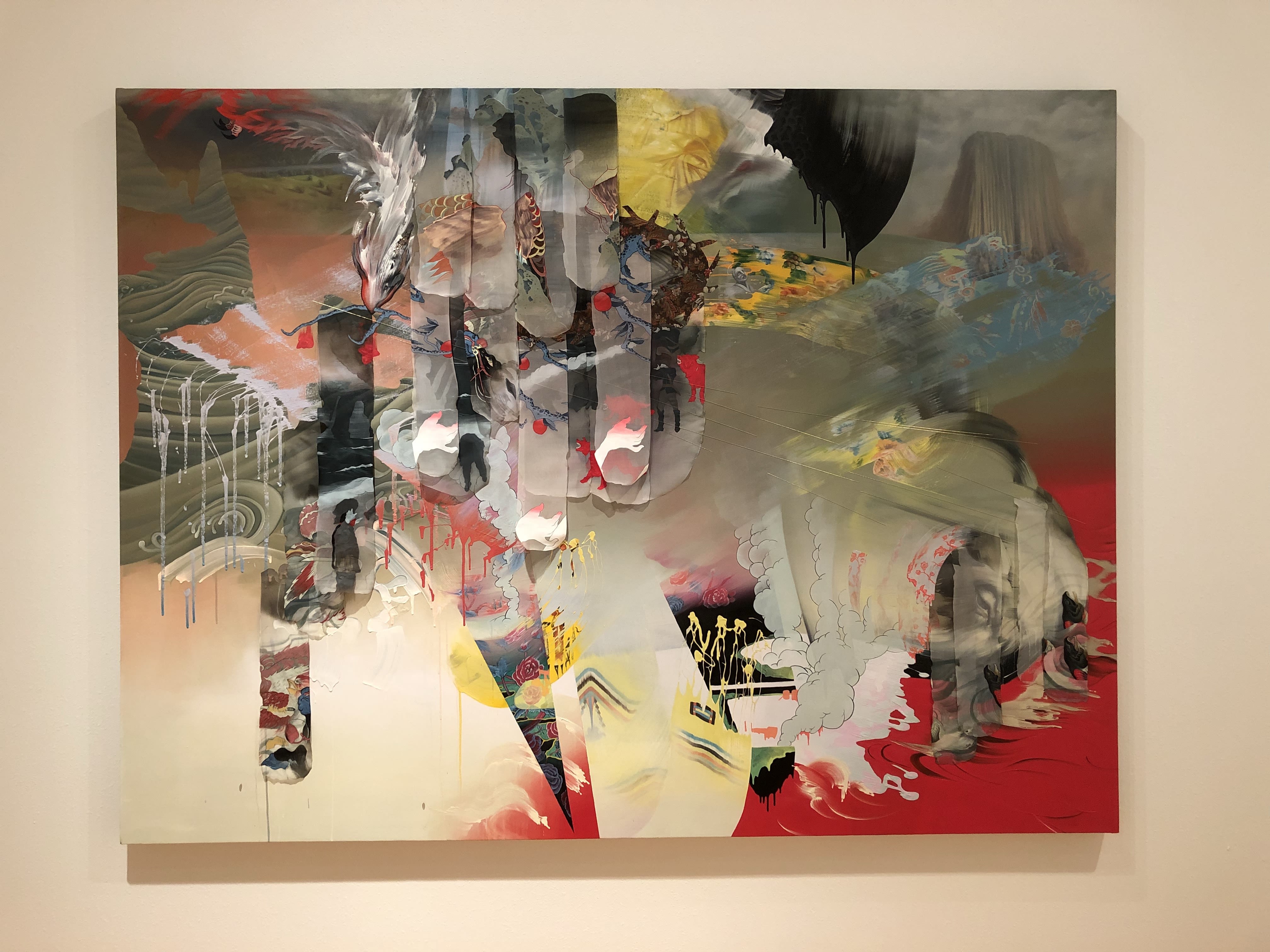What Does Discrimination Look Like?
In 1982, not long after Japanese cars first gained popularity and forced layoffs at American auto companies, a Chinese American engineer named Vincent Chin was beaten to death by two white autoworkers outside Detroit. Both assailants received just three years’ parole and a small fine—a sentence that would later serve as a rallying cry for stronger federal hate crime legislation.
Fan Club by Houston artist Mel Chin commemorates this episode. Fashioned from sliced fragments of a baseball bat, the piece mimics the appearance of the Japanese flag with a strip of silk stretched across the fan-like segments with a dark circle of dried blood in the center.
Alex Tu, a curator at Houston’s Station Museum of Contemporary Art, says Chin’s 1994 piece remains poignant, especially after the incident when Astros player Yuli Gurriel made a racist gesture to Dodgers pitcher Yu Darvis, who is Japanese, during last year’s World Series. “The whole city was like Oh, that’s no big deal lets not talk about that, but that is a big deal because normalization of racially charged gestures dehumanize individuals to the point of justifying racialized violence.”
And although the World Series has come and gone, ongoing debates about nationalism and immigration policy inspired the Station Museum to present Fan Club as part of an emotional new exhibit called In(di)visible. The show gathers work from 12 artists of Asian descent to examine the assimilation, discrimination, and invisibility experienced by generations of Asian Americans.
This was the motivation for the installation AND AND AND – Stammering: An Interview, a collaboration between Chicago-based artist Huong Ngo and Durham-based artist Hong-An Truong. The performance traditionally involves a member of the audience—preferably one who’s never experienced the immigration process—to be interviewed as if they were an immigrant. Ngo and Truong ask a combination of questions, including those targeted at green card and visa applicants. At the Station Museum, a recording of this interrogation is replayed in black and white on a small television surrounded by archival materials, including the text of the Chinese Exclusion Act that banned Chinese immigration for decades, draped over wooden frames.
“It’s kind of a combination of all those moments, and through that it reveals these underlying requirements for citizenship which are not really explicitly stated,” Ngo says. “It’s always required at some point for you to bend the truth in order to be this ideal citizen.”
Of course, the Exclusion Act was not the only policy to historically affect Asian immigration. Following the bombing of Pearl Harbor, Executive Order 9066 forced Japanese Americans into internment camps across the country, including three in Texas. Artist Judy Shintani accompanied her father to the Tule Lake War Relocation Center in California where he lived as a teenager during World War II. Suddenly, he began to rip planks from the camp’s barrack, which Sintani combined with barbed wire to create Pledge Allegiance. Her work, a haunting image of the American Flag and the false promise of "liberty and justice for all," hangs in the Station Museum exhibit.
Other artists dive into topics historical and contemporary. Lien Truong's …and still we banter with the Devil presents a striking canvas that riffs on the work of 19th century landscape painter Thomas Cole to examine the cultural and political conditions of America's founding—a country formed by colonization and immigration. Also included is Kenneth Tin-Kin Hung’s Careless Twitter by POTUS, a karaoke room that addresses the political landscape under President Donald Trump. Each featured artist of In(di)visible intends to brings a visibility and cultural understanding of Asian Americans, which Tu believes is especially important today.
“There are many things that have happened in the past, and a lot of people don’t know about the Chinese Exclusion Act or the Japanese internment,” Tu says. “I guess we are in a political climate where these things might be enacted again, so it’s an interesting footnote that we should pay attention to.”
Thru April 22. Free. Station Museum of Contemporary Art, 1502 Alabama St. 713-529-6900. More info at stationmuseum.com.








